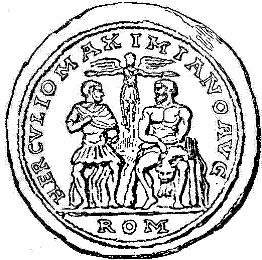Identifying Roman Coins
Identifying Roman Coins: Tools, Bronze Types, and Collectors’ Books
Well, identifying Roman coins can feel like learning a new language or finishing a course. You may as why? Strange letters, worn portraits, and symbols that look like something out of mythology — it’s no wonder so many collectors feel lost at first.
But once you understand what to look for — and have the right tools — it becomes a fascinating journey into the ancient world. This guide focuses on helping you identify Roman coins, especially bronze types, and includes resources collectors trust, like books and visual charts.
🧰 Tools That Make Identifying Roman Coins Easier
If you’re serious about collecting, a few affordable tools can make a huge difference:
🔎 1. Coin Magnifier or Loupe
A 10x or 20x loupe helps you spot tiny details in legends, mint marks, or hairlines on the emperor’s portrait. Crucial for worn bronze coins.
⚖️ 2. Digital Scale (in grams)
Weight is a clue to the coin’s type. For example:
-
Bronze As: ~10–11g
-
Bronze Sestertius: ~20–30g
-
Silver Denarius: ~3–4g
📏 3. Coin Caliper or Ruler
Size + weight helps confirm denomination, especially with bronze coins.
🧽 4. Soft Brush and Distilled Water
If your coin is dirty, a gentle clean with no harsh chemicals can help reveal features. Don’t overclean ancient coins — it hurts value!
🥉 How to Identify Bronze Roman Coins
Bronze coins are the most commonly found ancient coins — and often the most confusing. Unlike silver or gold, their details tend to wear down fast.
Here’s how to spot bronze denominations:
| Type | Size (mm) | Weight (g) | Notes |
|---|---|---|---|
| Sestertius | 25–35 | 20–30g | Large, thick, often greenish |
| Dupondius | 23–27 | 10–15g | Mid-size, emperor often radiate crown |
| As | 20–25 | 8–12g | Common, looks like dupondius |
| Quadrans | 13–17 | ~2–4g | Smallest, no portrait often |
Watch for “SC” (Senatus Consulto) on bronze coins — it indicates Senate authority for minting.
📘 Best Books for Identifying Roman Coins
If you’re new to Roman coins, these books are pure gold:
1. David Sear – Roman Coins and Their Values
A collector favorite — includes photos, coin types, and values from Republic through Late Empire.
2. RIC – Roman Imperial Coinage (Advanced)
A scholarly reference used in museums and auctions. Great if you want deep info, but not beginner-friendly.
3. Seaby’s Roman Silver Coins
Focuses on silver, but great for legends and portraits.
4. A Visual Catalog of Roman Coins (Online)
There are several PDF-style visual catalogs floating online — some created by collectors. These are great for quick matching.
📊 Roman Coin Identifier Chart (Free Download)
We’ve prepared a visual one-page Roman Coin Identifier Cheat Sheet that includes:
-
Latin abbreviation glossary (IMP, AVG, TRP, etc.)
-
Coin types by metal
-
Common reverse symbols (eagle, altar, Mars)
-
Mint marks and what they mean
📥 Click here to download the free guide (PDF)
❓ FAQ – Quick Answers for Beginners
How do I identify a Roman coin without knowing Latin?
Use a glossary or cheat sheet. Even spotting IMP, AVG, and a partial name can give you a solid clue. Over time, you’ll recognize the patterns.
What’s the difference between an As and a Dupondius?
Weight and crown! The dupondius is usually heavier and shows the emperor with a radiate crown. The As shows a laurel or bare head.
Are there good apps or websites for identifying Roman coins?
Some exist, but most are clunky. It’s better to use a visual guide, book, or join forums like:
-
ForumAncientCoins.com
-
NumisDon.com
What’s the best way to start identifying Roman coins?
Start small. Grab a magnifier, download a glossary, and focus on:
-
Portrait style
-
Latin legends
-
Reverse symbol
-
Mint mark

